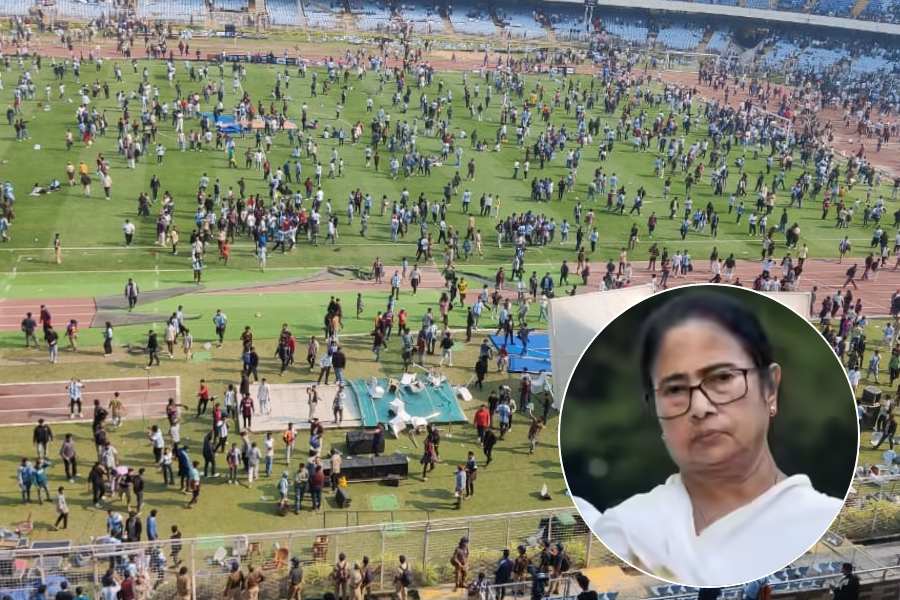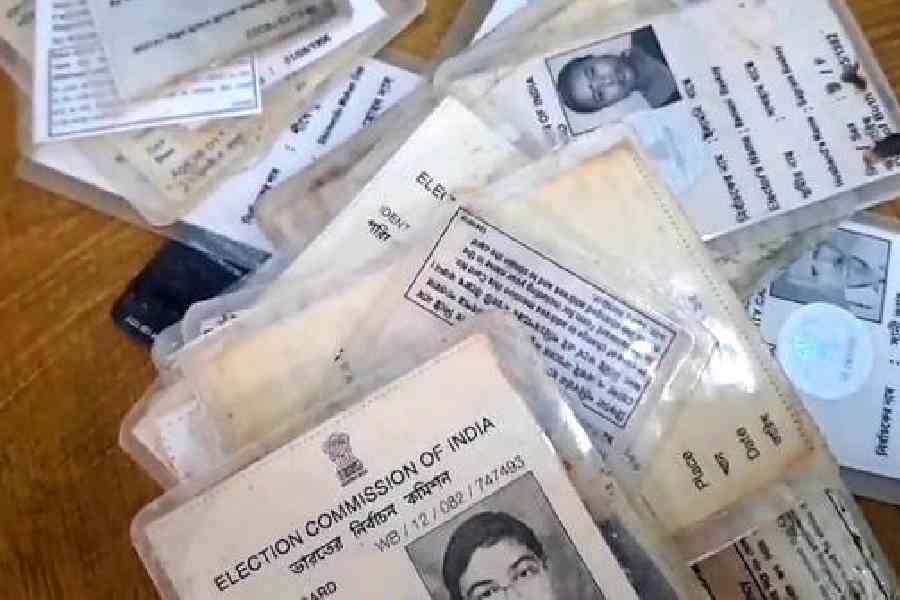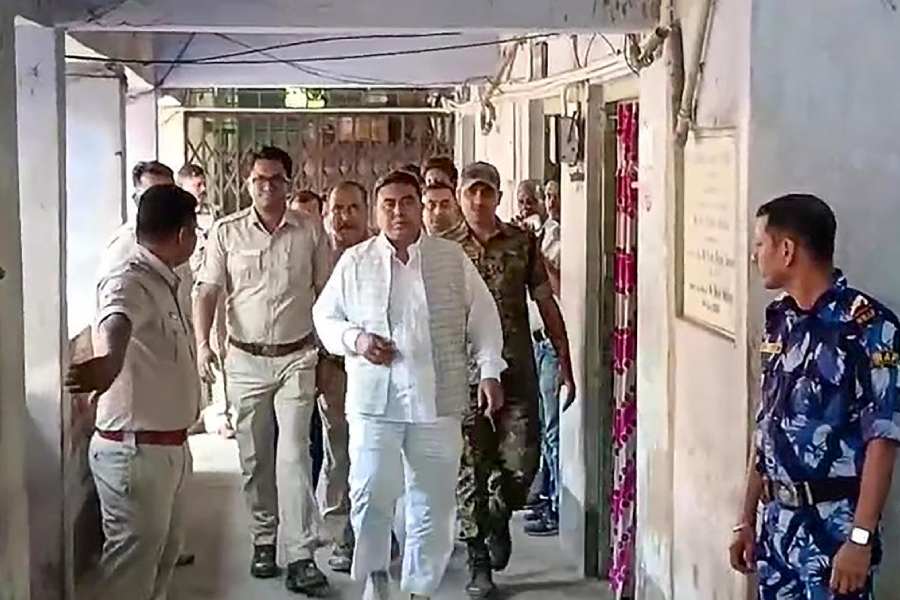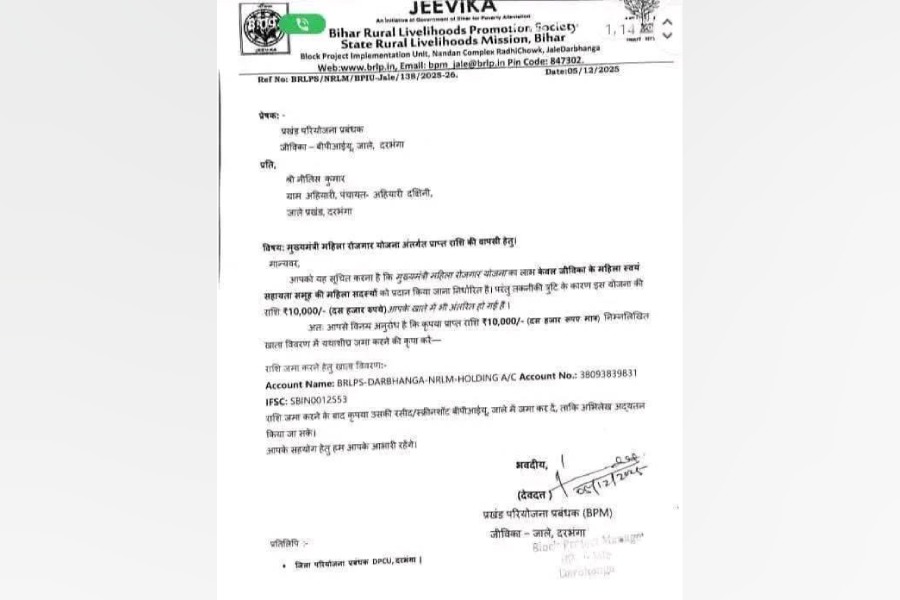 |
| The Vikramkhol rock shelter. Telegraph picture |
Bhubaneswar/Jharsuguda, Aug. 10: At a time when Odia is likely to receive the classical status, the cave inscriptions, believed to be one of the first written scripts in the state, at Vikramkhol lie in utter neglect.
Linguists of the state had included the inscriptions as one of the evidences of the genesis of Odia language in a report that was considered by the Sahitya Akademi to grant the classical tag to Odia.
The heritage site that dates between 3,000 BC to 4,000 BC (Mesolithic period) in Jharsuguda is facing the threat of fading forever due to authorities’ negligence. The rock shelter of Vikramkhol, located 12km from Belpahar, lies in the reserve forest of the Belpahar range.
The state’s first rock art site, excavated by K.P. Jayaswal in 1933, has a wide range of engravings and paintings of the prehistoric times. Details about the Vikramkhol rock art were published in archaeological journal Indian Antiquary in 1935. Since then, rock art researchers from across the country have been thronging the area.
“On studying the engravings, we find out symbols similar to the Brahmi script. This is a major evidence of Odisha’s early civilization and scripts,” said history professor of Sambalpur University P.K. Behera.
Though the Archaeological Survey of India (ASI) has preserved the site, nature and negligence are taking a toll on the inscriptions. “Seepage of rain water into the cave has affected the inscriptions as the rock surface is slowly corroding. The inscriptions have, therefore, begun to fade. Earlier, those were clearer. Now, shapes of the engraved letters are slowly getting deformed and the paintings are losing sheen,” said local resident Deepak Panda.
The Vikramkhol rock shelter is 37-metre long and 8-metre high. Though geometric figures, characters and running horizontal lines confuse the interpreter, yet local researchers believe that the script runs from right to left such as Arabic.
However, vandals have defaced the art by soiling it over the past decade.
Experts believe that there should have been a glass frame on the inscriptions to prevent viewers from damaging them. “This engraving is of great archaeological value. Its replica has been exhibited in the State Museum also. But, if they do not cover it with a glass layer or deploy guards to prevent any further harm, we will lose it,” said archaeologist B.K. Rath.
But, an ASI official say that since the inscriptions are part of a rock shelter, they are safe and do not need any preservation measures. “Engravings of Vikramkhol are inside a rock cave. This keeps it safe naturally. Moreover, it comes under the reserve forest, and, therefore, we cannot build anything there for its safety,” said superintending archaeologist of the ASI (Bhubaneswar circle) A.K. Patel.
The site, being a tourist spot, also lacks proper road communication or amenities for visitors. The tourism department appears to have ignored the site. Rock art enthusiasts come to know about the spot from various websites. But, they often find it difficult to reach the place because of lack of good roads. No prominent signboard indicating the way towards Vikramkhol is also visible.
“The tourist officers for Jharsuguda were usually situated either in Sambalpur or Rourkela, and hence, nothing much has been done here. I joined only in January. It will take sometime to study and analyse what we can do to promote tourism here. We are, however, definitely considering developing facilities for visitors,” said district tourist officer Bharatchandra Tudu.
A rock art researcher said there were several models to preserve these monuments and the government should follow those by forming a committee for preservation and documentation of the heritage sites.
“If the site gets a little promotion, it will pull visitors from all over the world just as thousands of tourists visit Altamira, a similar site in France. It is a treasure trove for researchers as well as tourists,” said rock art researcher Dilip Padhee.










